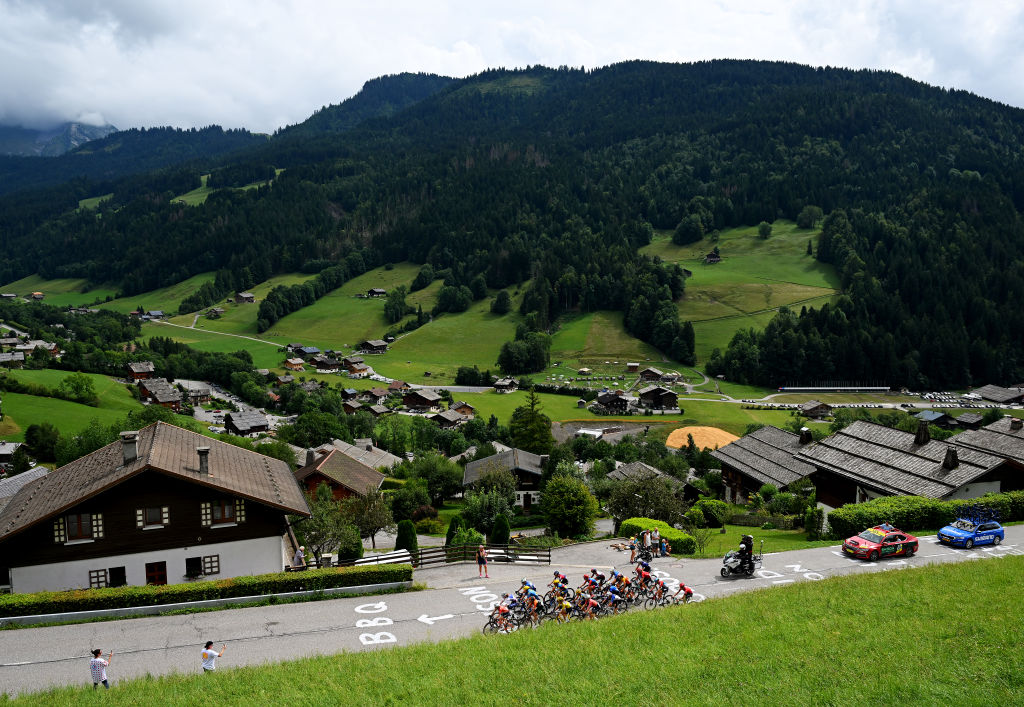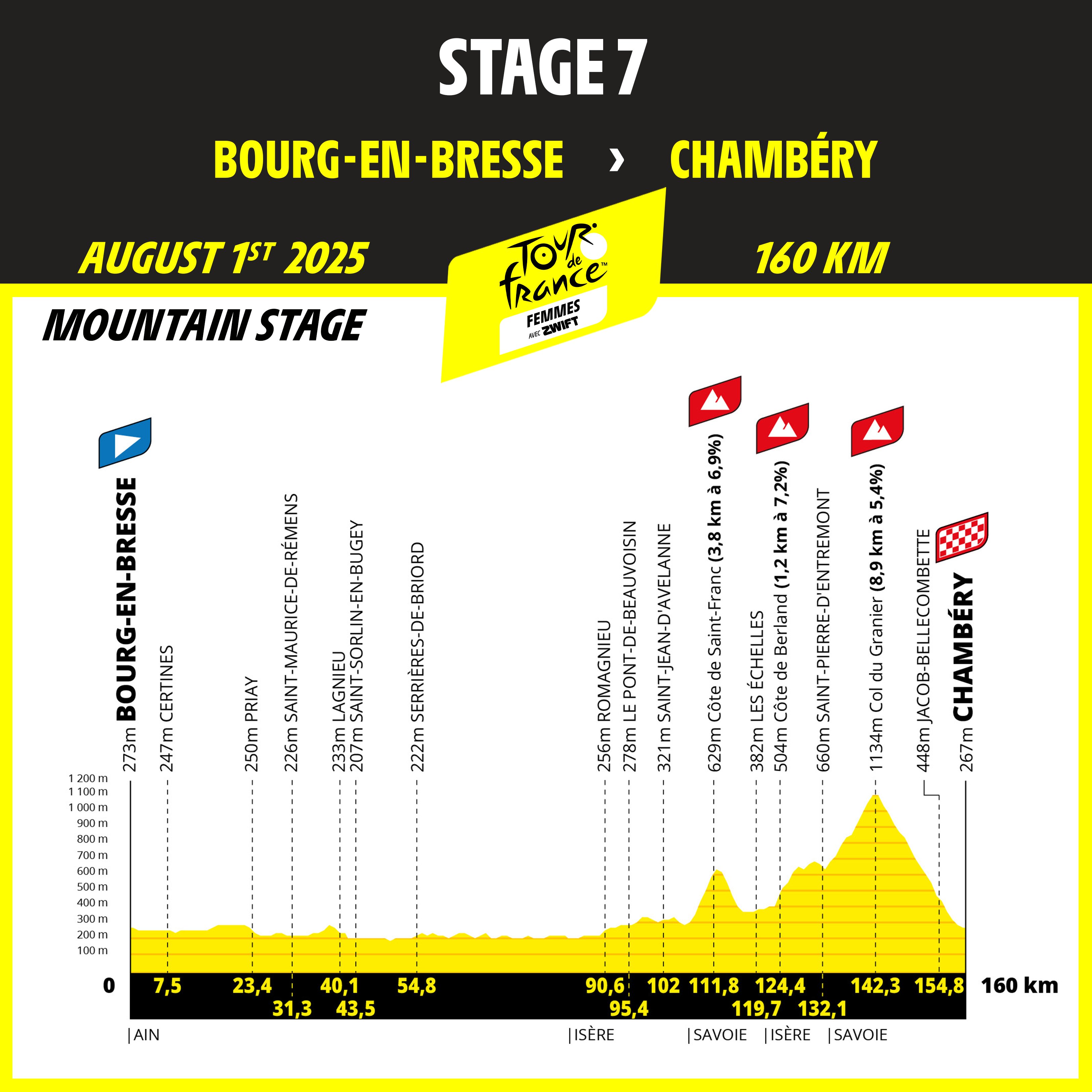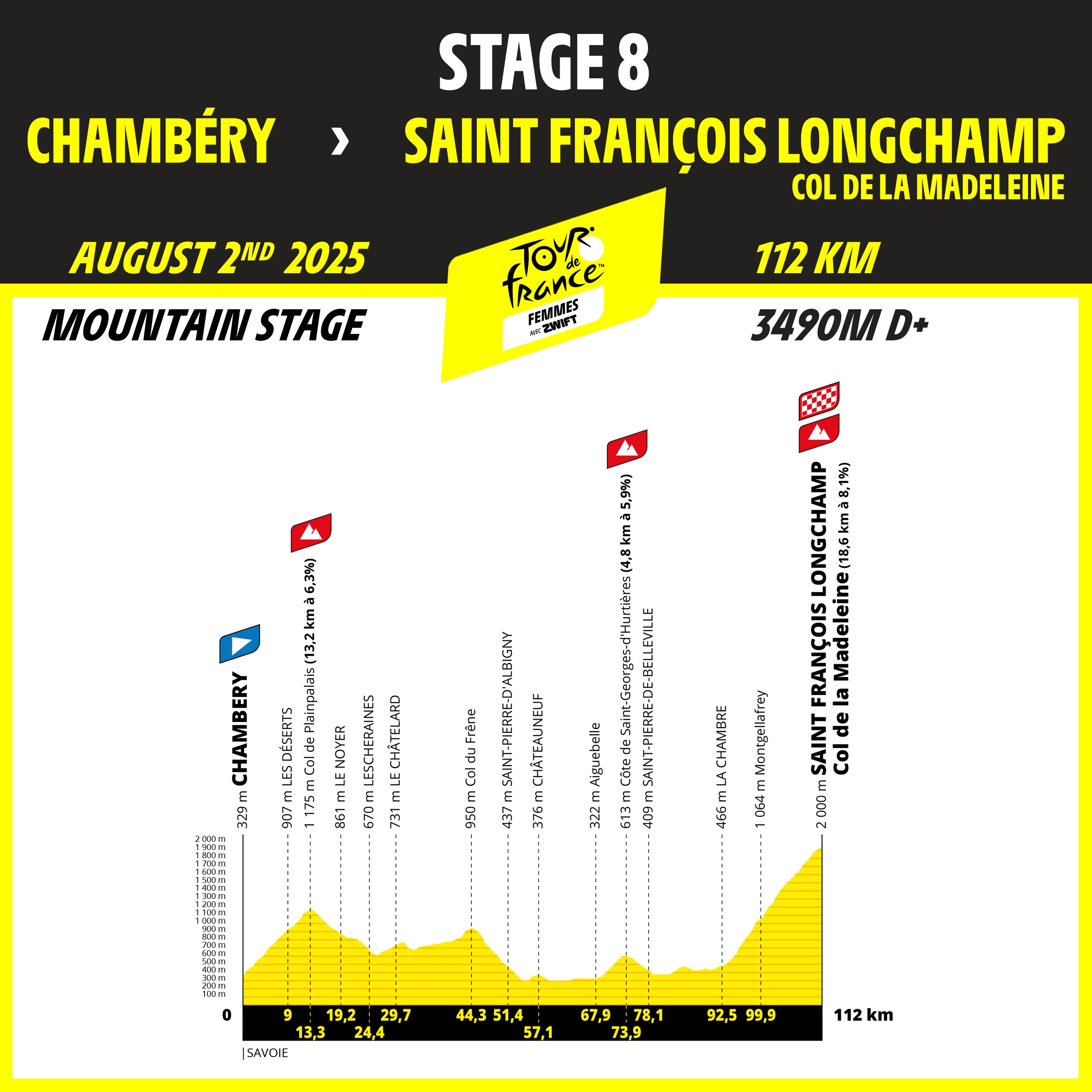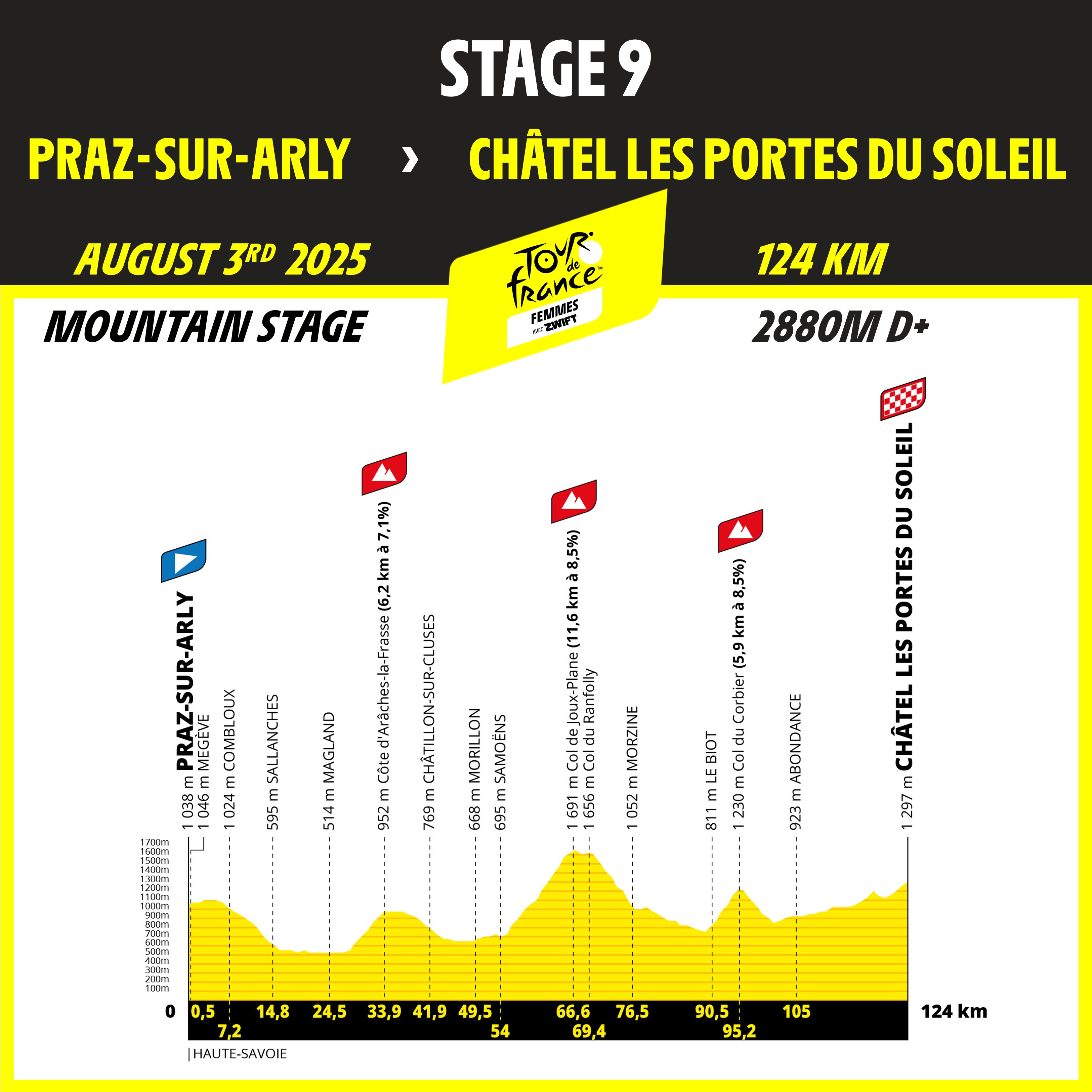The three key stages set to decide the battle for yellow at the Tour de France Femmes 2025
The fourth edition of the rebooted race has a course that should keep the tension high in the overall battle until the very end

There is certainly ample opportunity early in the 2025 edition of the Tour de France Femmes avec Zwift for the riders who are vying for an advantage on the overall to steal valuable seconds, though the final third could quickly make any earlier hard-earned gaps appear insignificant, with terrain where some may soar while others sink.
After the race starts on July 26, there are certainly few easy stages to be seen. Even one of the three days labelled as flat contains three categorised climbs and an uphill finish. However, they are but a teaser of what awaits through the final stages. The mountain days officially begin on stage 6, though with the category 1 and 2 climbs summiting 50 and nearly 30km from the finish line, there is a good chance that even if some overall contenders are set adrift that they will have a chance to haul back on board.
Stage 7, categorised as a hilly day, however, has potential to deliver a sting in the tail – not just because the final categorised climb – a cat 2 – is inching closer to the finish line but also because what follows is a technical descent to the line. However, there is no such finale to put a sparkle in the daredevil descenders' eyes on Saturday, with the long and gruelling Col de la Madeleine setting the scene for another Queen stage to remember.
Clear lines are bound to have been drawn on Col de la Madeleine but even after that, forget about a ceremonial final stage, with the fierce slopes of the Hors Categorie Col de Joux-Plane proving among the mid-stage obstacles the weary peloton must overcome before reaching the final uphill finish to Châtel that will set in stone the 2025 Tour de France Femmes overall winner.
To take a closer look at the stages that appear to be make-or-break in the battle for the yellow jersey, read on.
What goes up must come down
- Stage 7
- 159.7km
- 1,880m elevation gain

So often its the climbs that can make all the difference on those pivotal GC stages, but this time it is what happens after the final summit peaks which could also be telling. Stage 7 may have only earned a label of ‘hilly’ but there are two category 2 climbs nestled into the final 50km and with the final one of the Col du Granier (8.9km at 5.4%) topping out with under 18km, the dive to the finich line in front of the Chambéry Savoie Stadium could prove crucial. Race director Marion Rousse expects it to be fast and ’technical’, with a quick scroll through the profiles of the most recent incarnation of the Tour de France Femmes highlighting that the nearly 867m drop in altitude over the final 17.3km of racing is the biggest finishing descent we’ve seen since it began three editions ago.
Still, Cedrine Kerbaol last year demonstrated on the descent to Morteau on stage 6, just what a difference can be made on even a smaller downhill run to the end of a stage. At one point after she launched at 14.5km to go she put 40 seconds into the chasing GC favourites and got close to putting the yellow jersey of Kasia Niewiadoma (Canyon-SRAM) at risk. A fierce pursuit on the flatter roads to the finish line helped cut the final margin to 21 seconds for the first chase group.
The latest race content, interviews, features, reviews and expert buying guides, direct to your inbox!
The downhill run to the line on the agenda for stage 7, however, is at another level, as is the climb leading into it. There is every chance that there could already be slits by the top of the Col du Granier at 1,134 elevation, so the unrelenting drop down to the finish line at 267m could give a climb-savvy rider who is also a dextrous descender a considerable advantage. For the rider who is tentative when the road heads down this stage, however, it may be their worst nightmare.
Crowning the queen
- Stage 8
- 111.9km
- 3490m elevation gain

There is no doubt that this is the Queen stage of the 2025 Tour de France – a day that could be crucial in the battle for yellow but also one that those out of the overall race will be desperate to claim. When the women’s race restarted in 2022, it was La Planche des Belles Filles – won by Annemiek van Vleuten – that delivered crowning glory, then in 2023 it was the revered climb of the Col de Tourmalet that saw Demi Vollering seize yellow and ultimately overall victory. Then in 2024, Vollering once again won the Queen stage battle on Alpe d’Huez, but in a nail-biting finish, Kasia Niewiadoma held onto her overall crown. This year, the stage no one is likely to forget will finish on Col de la Madeleine, which will also deliver the highest point of this year’s Tour de France Femmes, the finish line sitting at 2,000m.
It is, however, certainly not the only challenge along the 112km stage with 3490m of elevation gain as it works its way from Chambéry to Saint François Longchamp - Col de la Madeleine, with the HC climb preceded by two other categorised ascents. In fact the road started rising as soon as the racing gets underway, heading into the Bauges massif and onto the category 1 Col de Plainpalais (13.2km at 6.3%) before making its way to the less challenging Col du Frêne and then onto the category 2 Le Côte de Saint-Georges-d'Hurtières (4.8km at 5.9%), topping out at around 38km from the line. With 18.6km left, the climb of the Col de la Madeleine begins, approaching from La Chambre to tackle the challenging south side with its average gradients of 8.1%. The terrain of the HC ascent also throws in the extra challenges of the variation in gradients and rough sections as it winds its way up to the ski slopes.
The men’s Tour de France, where the mountain has regularly featured since it was first introduced in 1969, will also include the climb this year in stage 18, sandwiched between the early HC climb of Col du Glandon and the summit finish on Col de la Loze.
Whether or not it is a yellow-clad winner in the women's race this stage, this day of racing is one where huge chunks of time could be gained or lost for the top overall contenders. A bad day on stage 8 would be every rider’s worst nightmare.
Save the celebrations
- Stage 9
- 124.1km
- 2,880m elevation gain

Forget about a ceremonial finale, with a pair of category 1 climbs flanking an HC one plus a climb to the finish, this is not it.
The 124.1km stage from Praz-sur-Arly to Châtel with 2,880m of elevation gain presents an intriguing range of possibilities. The category 1 Côte d’Arâches-la-Frasse (6.2km at 7.1%) provides the first climbing challenge, starting at less than 30km into the day of racing, while it's around the halfway mark that the field will have to tackle the biggest hurdle, the HC Col de Joux Plane (11.6km at 8.5%). With the top at just under 60km from the finish line, the question is, could this be too far out to launch?
Vollering made a move on the Col du Glandon last year, which was just a little over 50km from the end of the stage to the top of Alpe d’Huez, so it's not completely unprecedented, but it's definitely a big ask. Whether or not the big move is a risk worth taking will probably depend on just what the GC position is at this point, but it could be worth rolling the dice for a chance at yellow or a podium spot.
There is, however, a closer to the line option to put the pressure on and that is the category 1 Col du Corbier (5.9km at 8.5%) at around 30km from the end but, having said that, with what race director Marion Rousse describes at “the leg-breaking Route de la Bechigne” leading to the Châtel conclusion the chances to take seconds are only off the table in this Haute-Savoie stage once the riders have crossed the final finish line of the 2025 edition of the Tour de France Femmes.
Subscribe to Cyclingnews for unlimited access to our Tour de France Femmes coverage. Don't miss any of the breaking news, reports, and analysis from one of the biggest women's stage races of the season. Find our more

Simone is a degree-qualified journalist that has accumulated decades of wide-ranging experience while working across a variety of leading media organisations. She joined Cyclingnews as a Production Editor at the start of the 2021 season and has now moved into the role of Australia Editor. Previously she worked as a freelance writer, Australian Editor at Ella CyclingTips and as a correspondent for Reuters and Bloomberg. Cycling was initially purely a leisure pursuit for Simone, who started out as a business journalist, but in 2015 her career focus also shifted to the sport.
You must confirm your public display name before commenting
Please logout and then login again, you will then be prompted to enter your display name.
